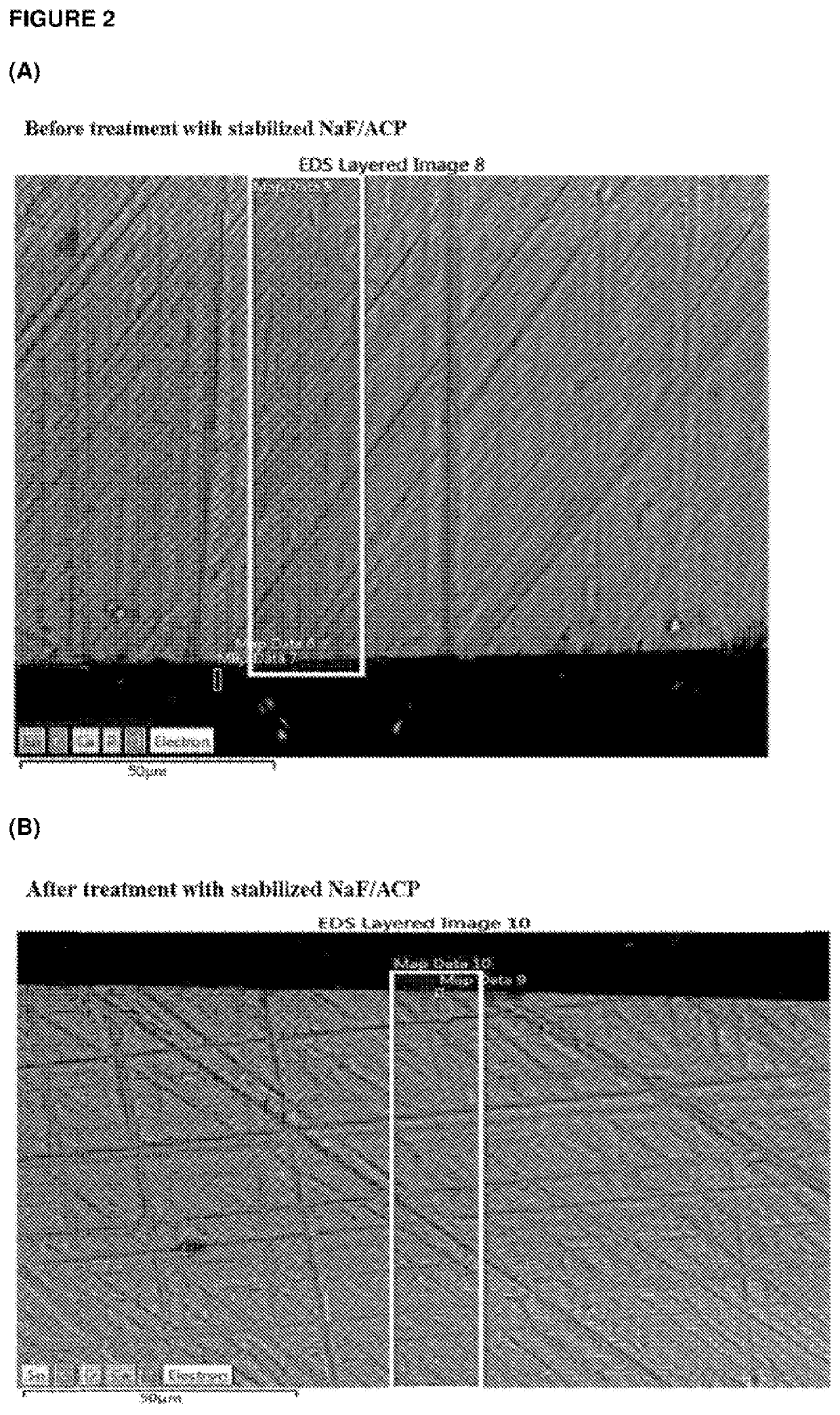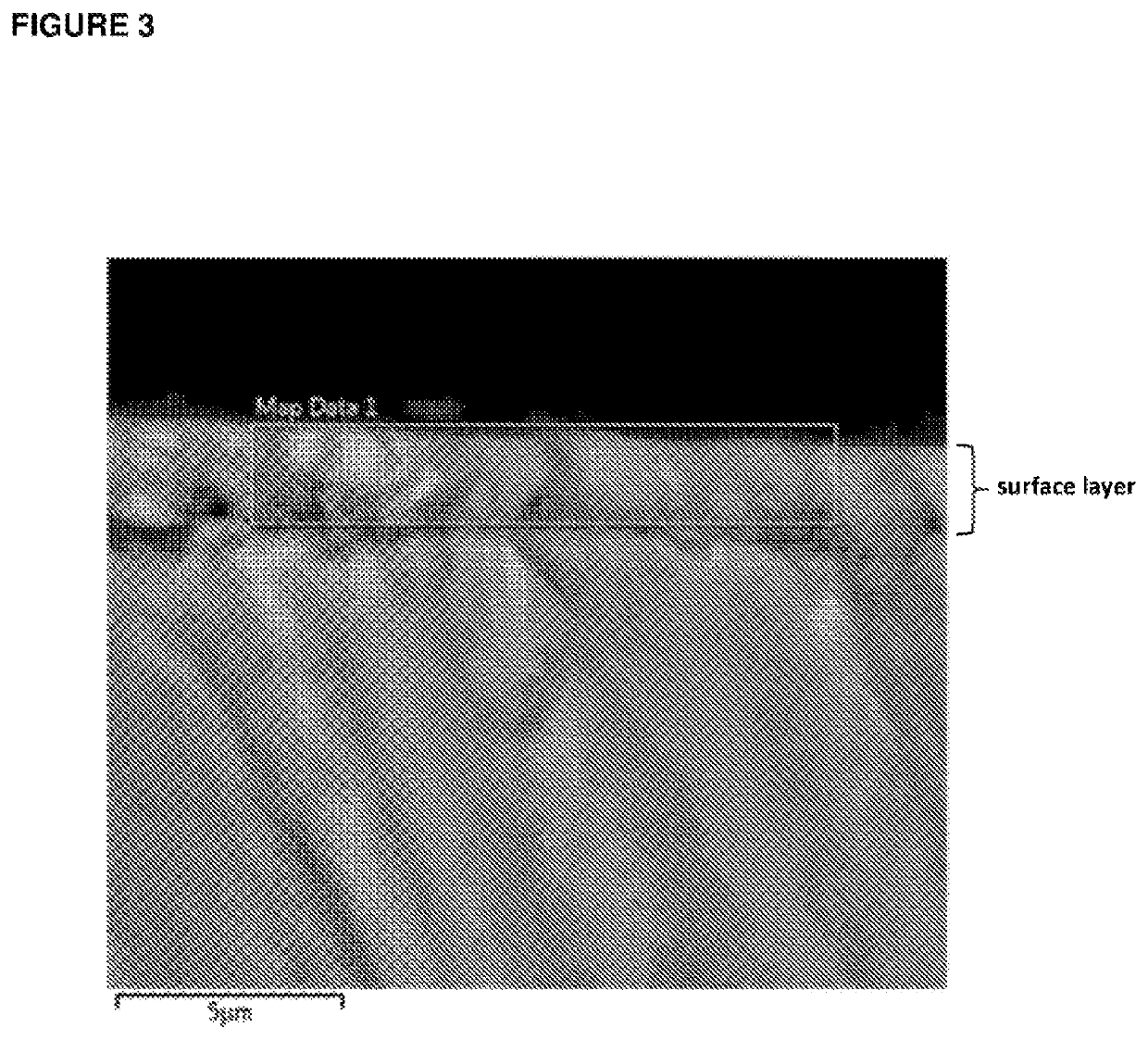Stabilized stannous compositions
a technology of stannous ions and compositions, applied in the direction of drug compositions, inorganic phosphorous active ingredients, impression caps, etc., can solve the problems of disease remains a major public health problem, the bioavailability and activity of stannous ions is severely reduced, and the bioavailability of stannous ions is reduced. , to achieve the effect of reducing the bioavailability and activity of stannous ions, reducing the activity of stannous
- Summary
- Abstract
- Description
- Claims
- Application Information
AI Technical Summary
Benefits of technology
Problems solved by technology
Method used
Image
Examples
example 1
[0211]Casein phosphopeptide-amorphous calcium phosphate (CPP-ACP) was acquired from Cadbury Enterprises Pte Ltd under the trademark name Recaldent™. A solution was prepared using CPP-ACP, SnF2 and NaF to produce at 0.4% w / v CPP-ACP, 220 ppm F as SnF2 and 70 ppm F as NaF, pH 5.6. Specifically, the CPP-ACP / SnF2 complexes were prepared by adding CPP-ACP to distilled / deionised water and then SnF2 (solid) and NaF added with addition of 1 M HCl to maintain the pH between 4.0-6.5. The pH was not allowed to go above 6.5. The total volume of acid added was less than 1% of the CPP-ACP / SnF2 solution volume. This solution was designated stabilized SnF2 / ACP. While NaF was added in this method it is a minor component and the majority of the fluoride derives from the SnF2. The method could be performed using SnF2 only (without NaF). Another solution was prepared using CPP-ACP and NaF to produce 0.4% w / v CPP-ACP, and 290 ppm F as NaF, pH 5.6. This solution was designated stabilized NaF / ACP.
[0212]Bo...
example 2
[0222]This example describes the experimental protocol for the measurement of CPP-bound (tightly bound), loosely bound and free ions in solution
[0223]A sample of each solution prepared in Example 1 was taken and less than 10% collected as a filtrate using a 3000 molecular weight cut-off Centriprep 3 ultrafiltration membrane. The Centripreps containing the samples were centrifuged at 1,000 g for 15 min in a Beckman J2-21 centrifuge using a JA 10.5 rotor. The original sample before Centriprep centrifugation and a sample of the filtrate after Centriprep centrifugation were taken for analysis of calcium, phosphate fluoride and stannous concentrations. The analysis of the original sample gave total calcium, phosphate, fluoride and stannous ion concentrations and the analysis of the filtrate gave free (unbound) calcium, phosphate and fluoride concentrations. The difference between the total and unbound concentrations is the bound concentration of Ca, Pi, F and Sn by the CPP.
example 3
[0224]A topical crème may be produced in accordance with the present invention having the following ingredients:
Water
Stabilised SnF2 / ACP and / or SnF2 / ACFP
D-sorbitol
sodium carboxymethylcellulose (CMC—Na)
silicon dioxide
titanium dioxide
sodium fluoride
flavouring
ethyl p-hydroxybenzoate
propyl p-hydroxybezoate
butyl p-hydroxybenzoate
PUM
 Login to View More
Login to View More Abstract
Description
Claims
Application Information
 Login to View More
Login to View More - R&D
- Intellectual Property
- Life Sciences
- Materials
- Tech Scout
- Unparalleled Data Quality
- Higher Quality Content
- 60% Fewer Hallucinations
Browse by: Latest US Patents, China's latest patents, Technical Efficacy Thesaurus, Application Domain, Technology Topic, Popular Technical Reports.
© 2025 PatSnap. All rights reserved.Legal|Privacy policy|Modern Slavery Act Transparency Statement|Sitemap|About US| Contact US: help@patsnap.com



